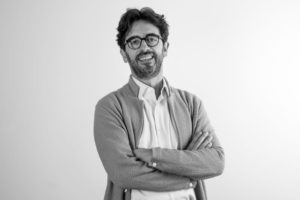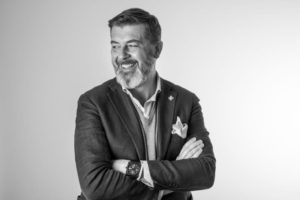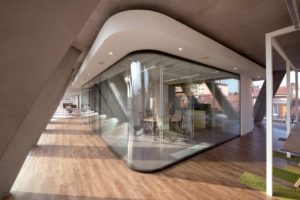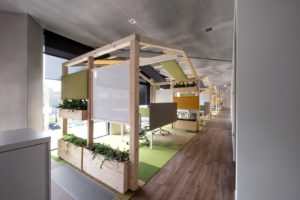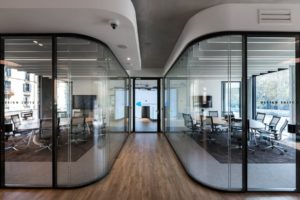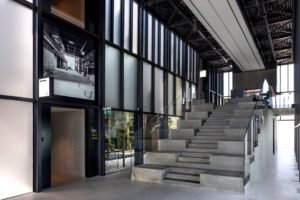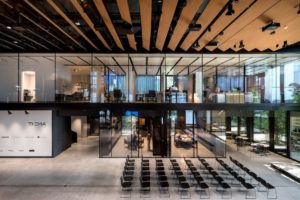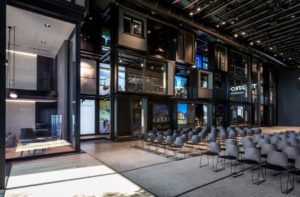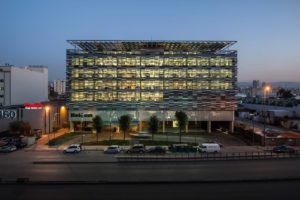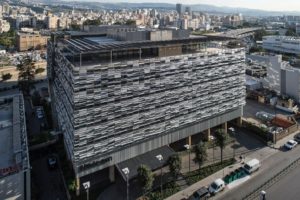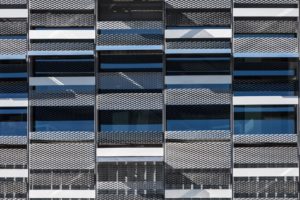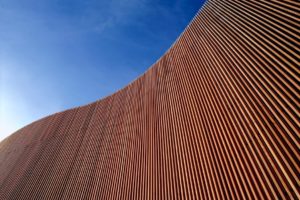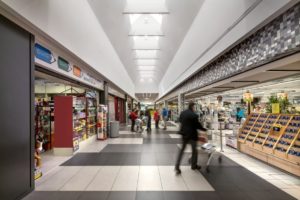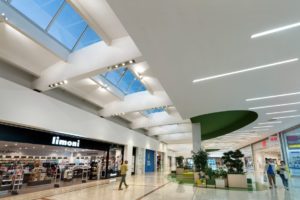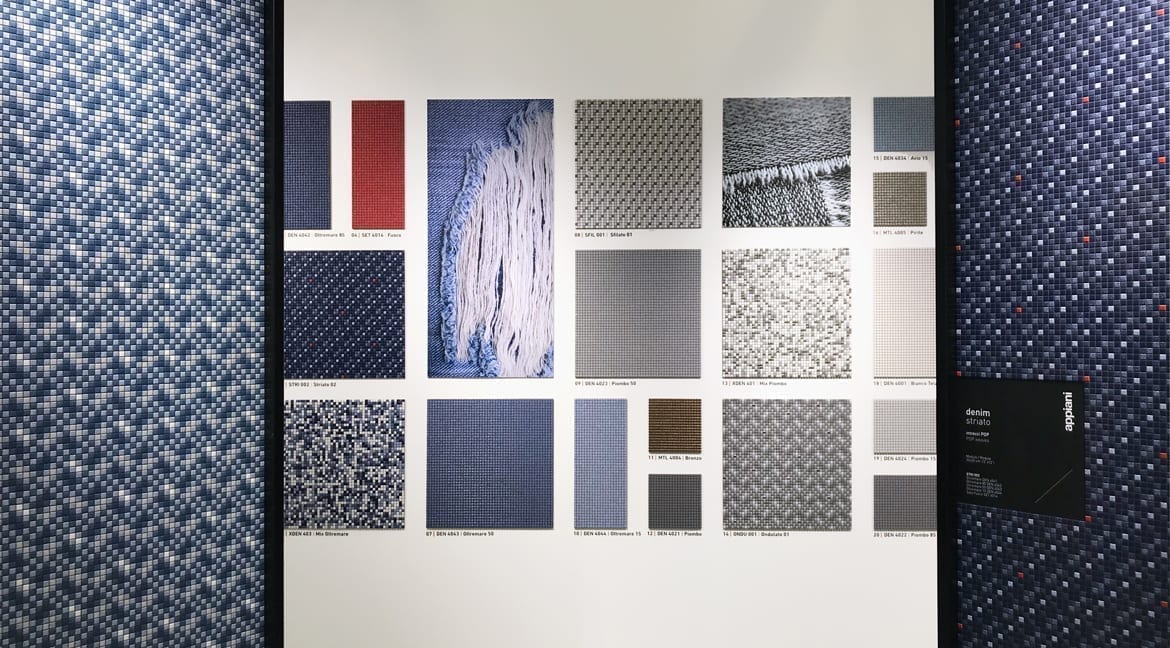Interviews

Architecture as a brand | by Alessandra Coppa
Lombardini22 is named after the street and number of its headquarters in the Navigli, Milan’s canal district. In this regenerated industrial space dotted with columns of various heights, lighting fixtures and white, open and well-lit desks, we meet architects Adolfo Suarez and Marco Amosso, two of the seven partners who founded the group in 2007. Bringing together expertise in different fields (architecture, engineering, marketing, communication), the practice adopts an innovative approach to the world of design and architecture. Amosso directs the L22 Urban & Building business unit specialising in the architectural design of commercial, cultural and residential use buildings, including both new build and renovation projects, while Suarez is head of the Retail division responsible for designing and generating value for commercial spaces.
- Adolfo Suarez
- Marco Amosso
The Lombardini22 Group is organised as a kind of laboratory where projects are envisioned as highly complex processes. How did you come to set up the practice?
Adolfo Suarez: Each of the partners could tell a different story. All seven of us have different ideas about our mission and professional practice. What we share is our overall vision: the desire to present ourselves as providers of a service, to meet our clients’ needs while delivering specialist expertise for the specific project we are involved in. Our group brings together professionals with backgrounds in economics, engineering and architecture and we work together in such a way as to make the most of everyone’s specific skills.
- Microsoft House, sede di Milano, 2017 (foto Dario Tettamanzi)
The Lombardini22 group’s various business units range from the city to retail and communication. Could you tell us how they operate?
AS: We believe in the value of expertise: if we feel we can do a job to a high standard of quality then we accept it. We started out by designing offices because some of our partners had expertise in that sector. We subsequently specialised further in the field by incorporating the brand DEGW.
MA: Our first experience of an acquisition, that of DEGW, involved incorporating the Italian branch of a global group and taught us the benefits of an approach based on brands, including those created internally. We generate value through our very different sector-focused business units.
AS: Our various brands or business units are created specifically for projects. With Eclettico Design for example we consolidated our experience in the hospitality industry stemming from our work on the Armani hotel. In the market there are sometimes sectors that require greater design vision. Entering that sector with a clearly recognisable, excellent brand enables the Lombardini22 Group to diversify business risk and continue growth. A certain critical mass in terms of projects also allows us to offer a high-quality service regardless of the economic cycle.
- Theatro, Verano Brianza (MB), 2017 (foto: Dario Tettamanzi)
You have seven partners, some senior, some junior. What does a collaborative approach to projects entail?
AS: Given its “organised complexity”, Lombardini22 could be described as embracing “positive conflict”. Everyone brings something to the table while fully respecting everyone else’s ideas.
MA: Our group was set up as a business idea. This approach was inspired by my first highly formative experience working at Renzo Piano’s practice, which is likewise organised as a structured company.
On your website you discuss your design method called Design Thinking. What does this involve?
AS: Design Thinking is an approach that enables us to take stock and check that we’ve found the right solution, and if necessary go back. It’s a process that involves the entire production chain that the project is part of.
- Holcom Headquarter, Beirut, Libano, 2015 (foto: Ieva Saudargaite)
Do you choose significant projects that represent the areas of expertise of your business units?
MA: One particularly important project in terms of internal growth was the Holcom HQ in Beirut (2015), which aimed to house the more than 20 companies owned by Holcom in a single building while establishing a highly iconic presence in Beirut’s urban landscape. The project interprets Holcom’s identity through a dense and at the same time diversified concept based on a series of layers that perform various functions at different levels, from warehouses to advanced office spaces. The entire building is enclosed in a double skin that together with the internal spaces forms a single coordinated and consistent system.
With the Theatro project, a showroom built in 2017 in Verano Brianza (MB), we wanted to create a building that would also serve as a communication and marketing tool. It draws on an idea of the founding companies Thema and Schüco Italia, which saw the need – and opportunity – to showcase their solutions in an unconventional way with a stage, parterre, set and foyer. Another notable project, which also saw the contribution of our brand FUD, was the new Microsoft Italia headquarters in Milan which we designed together with DEGW. We also developed an integrated communication system for the interior design project and workplace change management.
AS: An interesting project in the retail sector was the restyling of Unicoop in Castelfiorentino (2015), a light yet substantial intervention where the façade was transformed by superimposing a second skin over the existing envelope. The internal arcade makes extensive use of natural light, which filters through the two existing skylights integrated with a system of plasterboard ribs designed to control and intensify the lighting throughout the day. The walls above the hypermarket windows are enhanced by ceramic tiling in various shades of grey that has now become a leitmotif of the Unicoop Firenze checkout areas. The Castelfiorentino complex is part of Relooking, a major new project to upgrade several Unicoop Firenze shopping centres.
- Unicoop Firenze, Castelfiorentino (FI), 2015 (foto Dario Tettamanzi)
As well as using ceramic tiles from Ceramiche Vogue and Inalco for renovation of the Unicoop Firenze shopping centres, you also presented new collections for Appiani at Cersaie. What did this project involve and what do you think of the aesthetic potential of ceramic in general?
MA: Adolfo is the biggest user of ceramic because the largest surfaces to be covered are found in shopping centres. We also use ceramic in the hotel industry, where the material is making a big comeback thanks to its development and high level of sophistication. The very large and very small sizes are particularly interesting. Large-size ceramic tiles have seen significant development for exterior use in the application of rainscreen cladding as they create exceptional envelopes without the prohibitive costs of stone. This ability to adapt to very different applications makes ceramic a very interesting and contemporary material.
AS: Ceramic’s enormous technical development and ever greater capacity for customisation allows it to be used to create highly unique floors. It’s also an extremely versatile material.
MA: The experience with Appiani was unusual in that it began with a consultation from FUD focusing on brand repositioning rather than the product itself. The strong rapport we established with the Appiani work group provided the opportunity to design an innovative kind of mosaic. Several new collections were unveiled at Cersaie 2017: Metrica, which reinterprets traditional ceramic geometry with the pulsating colours and light of metallic bronze mosaics; Libra, which stands out for its chiaroscuro effects; at Cersaie 2018: Denim, inspired by the blue tones of the eponymous fabric.
BIOGRAPHY
Lombardini22 is a group of professionals specialising in the Office, Retail, Hospitality and Data Center sectors founded in 2007 in Milan. It was 3rd in the Il Sole 24 Ore 2018 rankings of Italian architecture firms in terms of revenue (€12.2 million in 2017) and 1st in terms of revenue generated in Italy. Lombardini22 has a staff of more than 200 people with an average age of just under 35, including architects, engineers, designers and communication specialists.
The group, led by Chairman Paolo Facchini and CEO Franco Guidi, has seven partners and operates through five business units: L22, devoted to architecture and engineering; DEGW, a leader in workplace consultancy and the interaction between physical space and business performance; FUD Brand Making Factory, specialising in Physical Branding and Communication Design; CAP DC devoted to Data Centers; and Eclettico for hospitality projects.
April 2019




